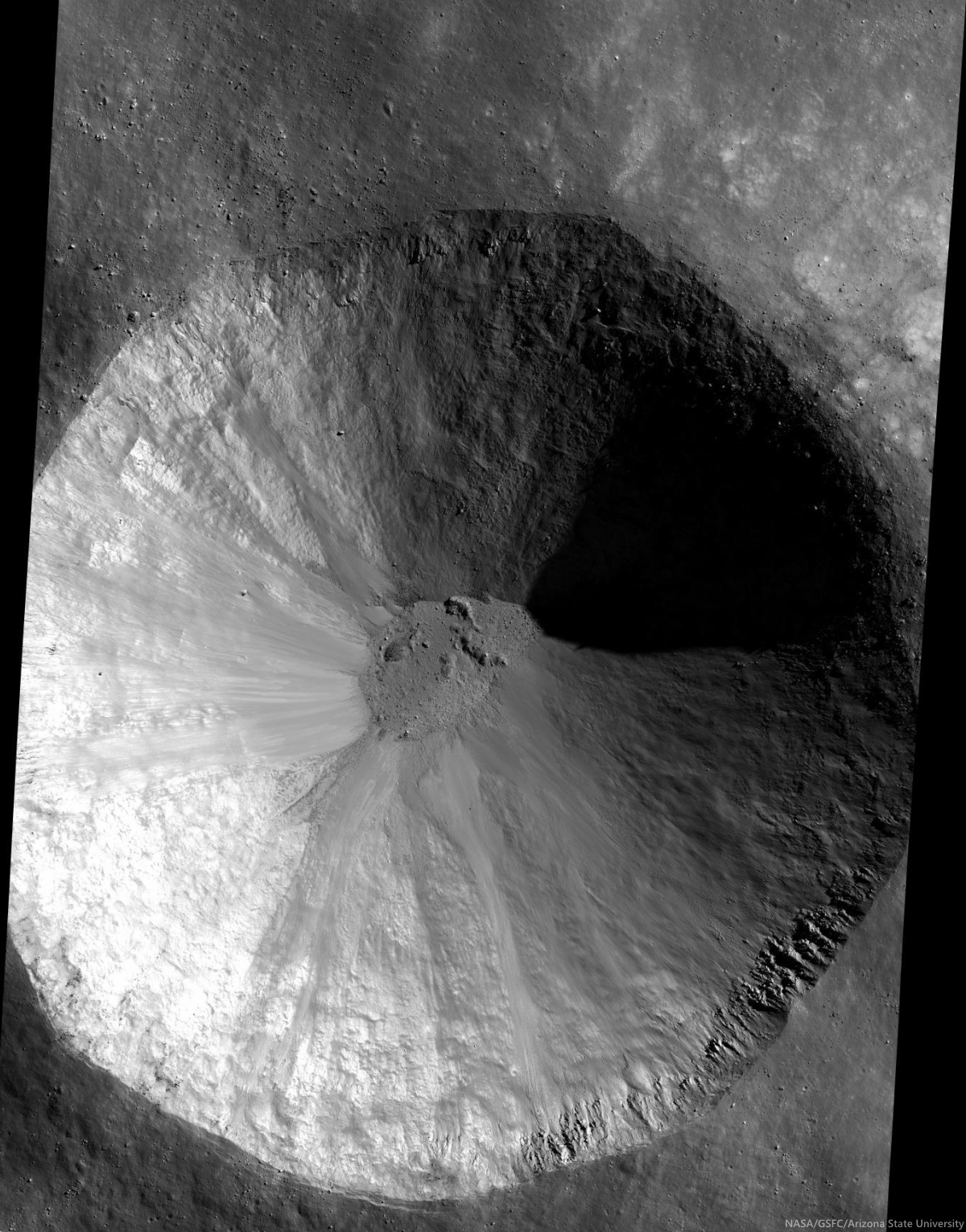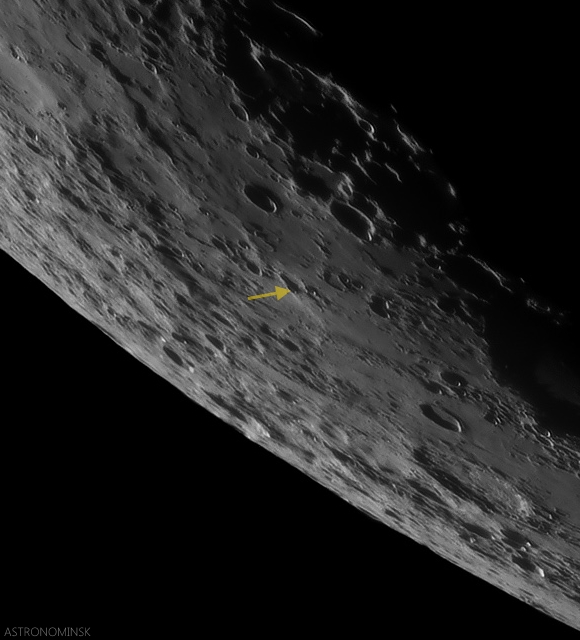 |
| The upper southeastern rim of Piazzi H (8 km; 40.185°S, 294.237°E) 800 meter field of view from LROC NAC observation M1152277932L, LRO orbit 21794, April 16, 2014; 59.17° incidence angle, resolution 75 cm from 72.25 km [NASA/GSFC/Arizona State University]. |
LROC News System
The rocks that form Piazzi H's (40.185°S, 294.237°E) beautifully textured upper crater wall hang precariously from near the crater rim. Under the action of gravity and time, material from crater walls continuously slough off. This fall to a lower gravitational potential is one of the reasons why old craters have a smoother appearance (the other reason is bombardment by micrometeorites which pulverize craters into fine grained dust).
Why do these overhanging rocks not succumb to the force of gravity? Perhaps this is telling us that this crater is young, gravity has not had enough time to pull those rocks down. One way to determine if a crater is young is to look for high reflectance ejecta, and the WAC 643 nm normalized reflectance map allows us to do just that.
The image below, on the left, is the from a WAC 643 nm normalized reflectance mosaic showing the high reflectance ejecta of Piazzi H. We also see a similar pattern with from the nearby crater Lacroix B, implying they are of similar ages. But we don't find the same rock overhangs on the walls of Lacroix B.
 |
| The roughly 93 km distance between Piazzi H and LaCroix B craters is shown comparatively, using the LROC Quickmap application, rolling from LROC Wide Angle Camera (WAC)-derived 643 nm normalized reflectance through the LROC WAC digital elevation model, a very fast way to demonstrate how granularity can be overwhelmed or shown in stark relief, depending on the angle of illumination or the range of wavelengths presented [NASA/GSFC/Arizona State University]. |
 |
| Crater rim outcrops hang onto the southeastern rim and wall of Piazzi H (7.7 km; 40.185°S, 294.237°E), from a mosaic including the left and right frames of LROC NAC observation M1152277932 [NASA/GSFC/Arizona State University]. |
 |
| Piazzi H, on the west rim of a larger, previously unrecognized and far more ancient crater, can be seen from Earth after a Full Moon, or in relief about 5 days following. Here the crater is picked out from a full disk mosaic of 25 images captured before dawn, August 26, 2011. The entire dramatic crescent, by Yuri Goryachko, Mikhail Abgarian, Konstantin Morozov of Minsk, Belarus can be seen in their gallery HERE [Astronominsk]. |
Related Posts:
Layering in Euler Crater



No comments:
Post a Comment